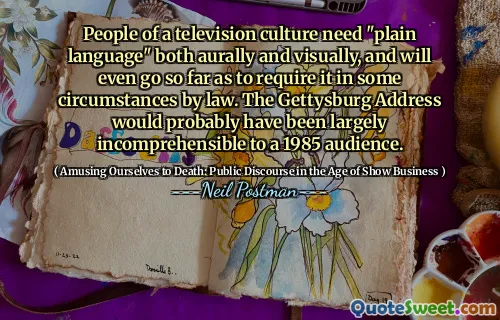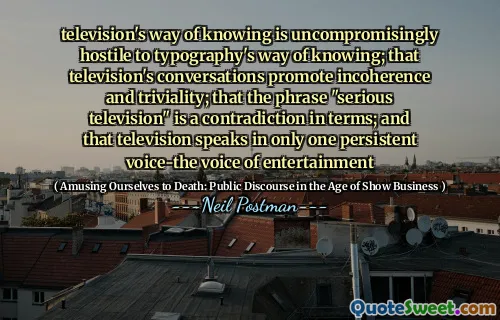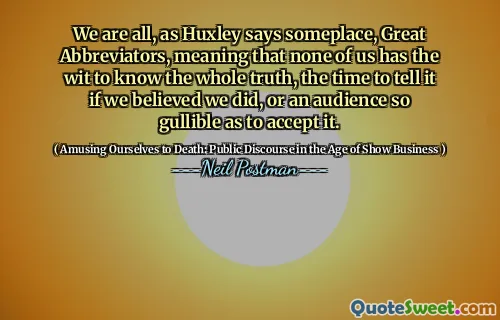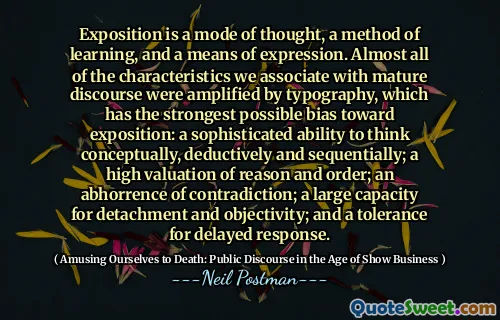
Exposition is a mode of thought, a method of learning, and a means of expression. Almost all of the characteristics we associate with mature discourse were amplified by typography, which has the strongest possible bias toward exposition: a sophisticated ability to think conceptually, deductively and sequentially; a high valuation of reason and order; an abhorrence of contradiction; a large capacity for detachment and objectivity; and a tolerance for delayed response.
Exposition serves as a vital approach to thought and learning, enhancing how we express ideas. It thrives on the power of typography, which supports clear and organized discourse. Features of mature discourse, such as conceptual thinking, logical deduction, and an appreciation for order, are elevated through this medium. Typography encourages a reasoned and systematic way of thinking, allowing for clarity and objectivity in communication.
Neil Postman, in "Amusing Ourselves to Death," emphasizes how these attributes of exposition help avoid contradictions and foster a thoughtful response, reflecting the values of an informed society. This method allows for a more detached perspective, key to understanding complex ideas and engaging in meaningful dialogue. The ability to process information with patience and reason is essential in contrast to more sensational forms of communication prevalent today.






